
9 Classics of Queer YA Literature
An Emerging Canon
Classic queer young adult novels are something of a more recent phenomenon. Though there are many novels with characters historically interpreted as queer, panic and pearl-clutching about introducing children to gay thoughts has meant we’ve had a slow start to building a queer YA classics canon. Although I can read the tenderness of the boys in The Outsiders through a queer lens, S.E. Hinton would have a problem with that interpretation. Before young adult was even a viable publishing category, the history of queer literature was under attack from people determined to erase the existence of queer narratives.
In recent years, there has been a lot of movement for queer YA narratives in publishing. Queer women are still in a bit of a deficit compared to men, and it’s only recently that nonbinary and gender-nonconforming people are front and center in the young adult world. Malinda Lo has a great piece on the struggles of F/F versus M/M as a reader and a writer, with the most recent statistics about representation of queer women specifically in YA fiction. In addition, LGBTQ+ fiction in the young adult world is still largely focused on the cis girls and boys.
Although it feels like large strides have been made in the world of queer young adult fiction, it is still an incredibly small sector of the publishing world writ large. There are still book burnings and bannings and general no-fun types screaming at teens exploring their sexualities. I believe classics are recognized as “classics” more quickly in the queer YA fiction world because they speak to specific experiences of young queer people more explicitly and truthfully than anything that only approaches queerness through subtext. At the same time, language around queer identity is changing constantly (for example, some people might be very angry with me for using the word “queer” casually in this piece). The latest books are more likely to speak to the teens consuming them.
This list of classics is far from conclusive, but I tried to pull from historical queer novels as well as recent ones that have made a big splash. “Instant classic” can be an overused term, but I think it can be especially relevant in queer literature. There are so many books that have come out in the past 20 or 30 years that speak to a queer experience that had yet to be represented. Here’s to hoping the young adult queer canon continues to grow with more and more classics.
From Then to Now
I’ll Get There. It Better Be Worth the Trip. by John Donovan
Originally published in 1969, this novel is the first to explore a relationship between teenage boys so explicitly. It may seem quaint right now, but this novel was published the same year as the Stonewall Riots, at a time of intense gay panic and LGBTQ+ marginalization. Gay men could only exist in secret because their identity was still classified as a mental illness and illegal to “practice” in public. Davy is a 13-year-old and, since the death of his grandmother, now must navigate an impossible relationship with his mother. He meets and falls for another boy, Altschuler. In a not entirely shocking turn of events, their relationship is left to the imagination—most likely written by Donovan in this way to avoid total and complete annihilation of the book. Nonetheless, it’s an important queer cultural artifact because it addresses what was unspoken at the time, with all the pathos and confusion surrounding it.
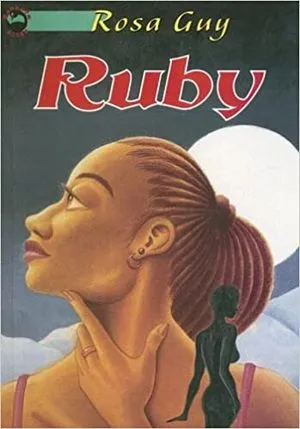
Ruby by Rosa Guy
Published in 1976, this is the earliest young adult book with a main character who was a queer girl of color. After moving from the West Indies to Harlem with her family, the titular character Ruby struggles to adapt to a very unfamiliar world, missing the comfort of the sun and feeling alone. She also deals with her burgeoning attraction to her sophisticated friend Daphne. It’s easy to see the inspiration this book may have given for future authors writing about adjusting to new places, family expectations, and burgeoning desire.
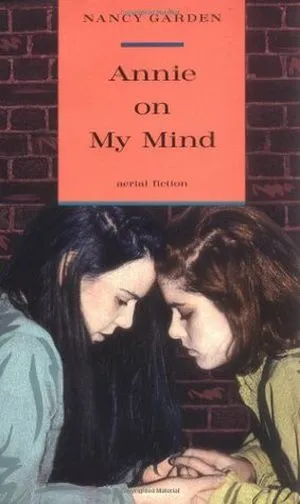
Annie on my Mind by Nancy Garden
Banned, publicly burned in Kansas City in the 1990s, and also declared one of the most influential books of the 20th century, Annie on My Mind has caused controversy since its release in 1982. The book, instead of condemning homosexuality, allows the two protagonists, Liza and Annie, a happy ending. To get there, Liza has to encounter her internalized biases in conjunction with her ever-growing love for Annie. The way they interact is tender and romantic. This book is not as irrelevant as I would hope it to be because there are still so many places where LGBTQ teens have to hide who they are. I hope this book, which has never been out of print since it came out, can continue to offer solace for young people.
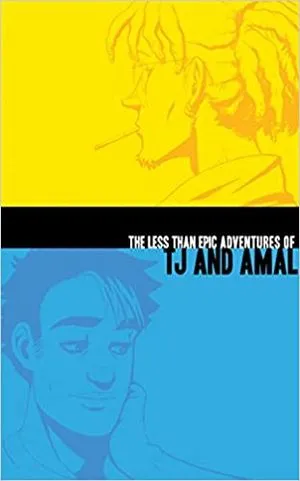
The Less Than Epic Adventures of TJ and Amal by E.K. Weaver
Although now we have a printed graphic novel version of this story, TJ and Amal originally stole hearts and minds on the Internet in 2009 as a webcomic. At the time, this was where it was easiest to find the quirky, experimental stories of queer love where the queer characters weren’t relegated to sidekick status. After Amal comes out, cancels his engagement, and gets kicked out of his house, he meets TJ and they embark on a road trip from Berkeley to Providence. For anyone who loves a story with an odd couple, road trip romance, this is the perfect graphic novel.
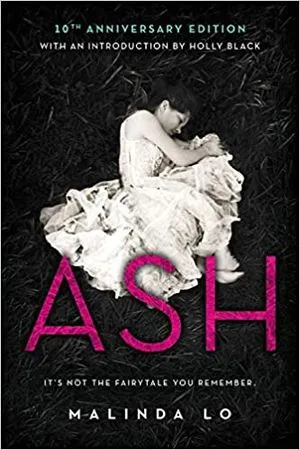
Ash by Malinda Lo
Queer fantasy is just as necessary as queer reality. In this retelling of Cinderella, Malinda Lo gives us a much fuller pictures of Ash’s rejection from her stepmother. Giving the Cinderella character any sort of character trait that would cause her to be further ostracized by her stepmother and stepsister makes the story resonate more deeply than the original, in some ways. The development of the romance between Ash and Kaisa is very slow, but 2009 was still a very different landscape for teen lesbian fiction than today. Malinda Lo continued pushing queerness into YA genre fiction, instead of only writing explorations of the difficulty of queer identity in “real” life. Queer people can exist in fairy tales, too.

Aristotle and Dante Discover the Secrets of the Universe by Benjamin Alire Sáenz
The popularity and resonance of this book is overwhelming in the best way. It seems like almost every gay teen boy book references this title in the promotional copy, and with good reason. Aristotle and Dante’s love story broke down a door and a million other wonderful stories have come rushing through. In a chance meeting, Ari and Dante go from loners to unlikely friends to something more. They have full, complicated lives outside of their love story, and it’s wonderful to see their romance develop through conversation and exploration.
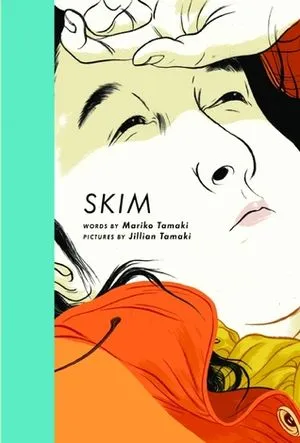
Skim by Mariko Tamaki and illustrated by Jillian Tamaki
As the world of high school whirls its drama around her, Wiccan goth Kimberly (or Skim) is trying to figure out who she is. In a beautifully drawn graphic story, Skim deals with the intense cliques of her private girls’ school, and it’s impossible to remain completely above the fray. Nervous guidance counselors and falsely cheery popular girls encroach on Skim, making it more difficult for her to deal with her depression. When she gets her first all-out crush, almost-love feelings for another girl, Skim has to come to terms with herself, not just her sexuality.
CW: suicide, depression
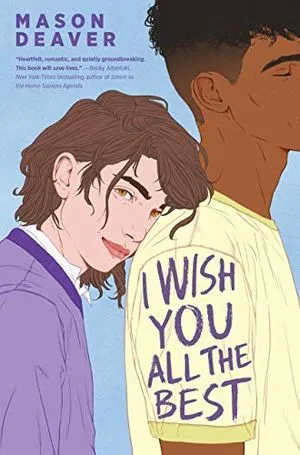
I Wish You All the Best by Mason Deaver
The cover treatment of this book is uniquely lovely, which is fitting for the story inside. Nonbinary teen Ben is kicked out of their home and has to move in with their sister whom they haven’t seen in ten years. The crushing pain of family relationships is front and center for Ben, and you can’t help but feel for them. Ben’s issues with anxiety and panic are incredibly well written here as well, and Deaver communicates the crushing isolation that they can impose on someone. The romance that Ben finds with Nathan at their new school is adorable, and it makes sense why it takes them both so long to admit their feelings for each other. While love is important to Ben, they also have to deal with a million other issues outside of their gender identity and sexuality.
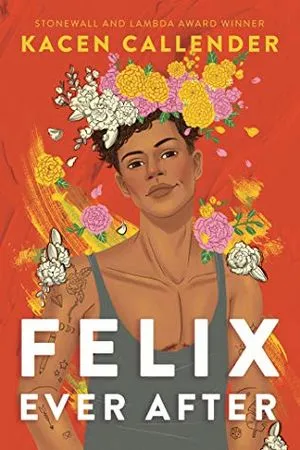
Felix Ever After by Kacen Callender
Already in the works as a television adaptation, Callender’s story of a transgender teen finding love and loving himself has cropped up again and again on must-read lists of 2020. In addition to being very tender, Felix is funny and kind of messy in the way a lot of teenagers are. In a quest for revenge against a transphobic bully, Felix gets caught up in an online identity mess and needs to figure out a way out of it without hurting anyone too much. Felix is an extremely relatable character for those with social anxiety, but of course his is heightened by the fear that someone will decide they’ve had enough of him for that day. It ultimately feels like a huge triumph when he finds love, and I hope the success of this book inspires many more like it for years to come.
Ever-Changing and Evergreen
The canon of queer young adult fiction can and should update constantly. My particular list of the moment may not reflect yours, and I might choose to add many more books in a month or two. Canons should be expansive and reflect many different life experiences, especially if a “canon” is supposed to be a starting point for an entrance into a certain kind of literature.
Queer young adult fiction is a consistent topic here at Book Riot, so there will always be entrance points and recommendations.













